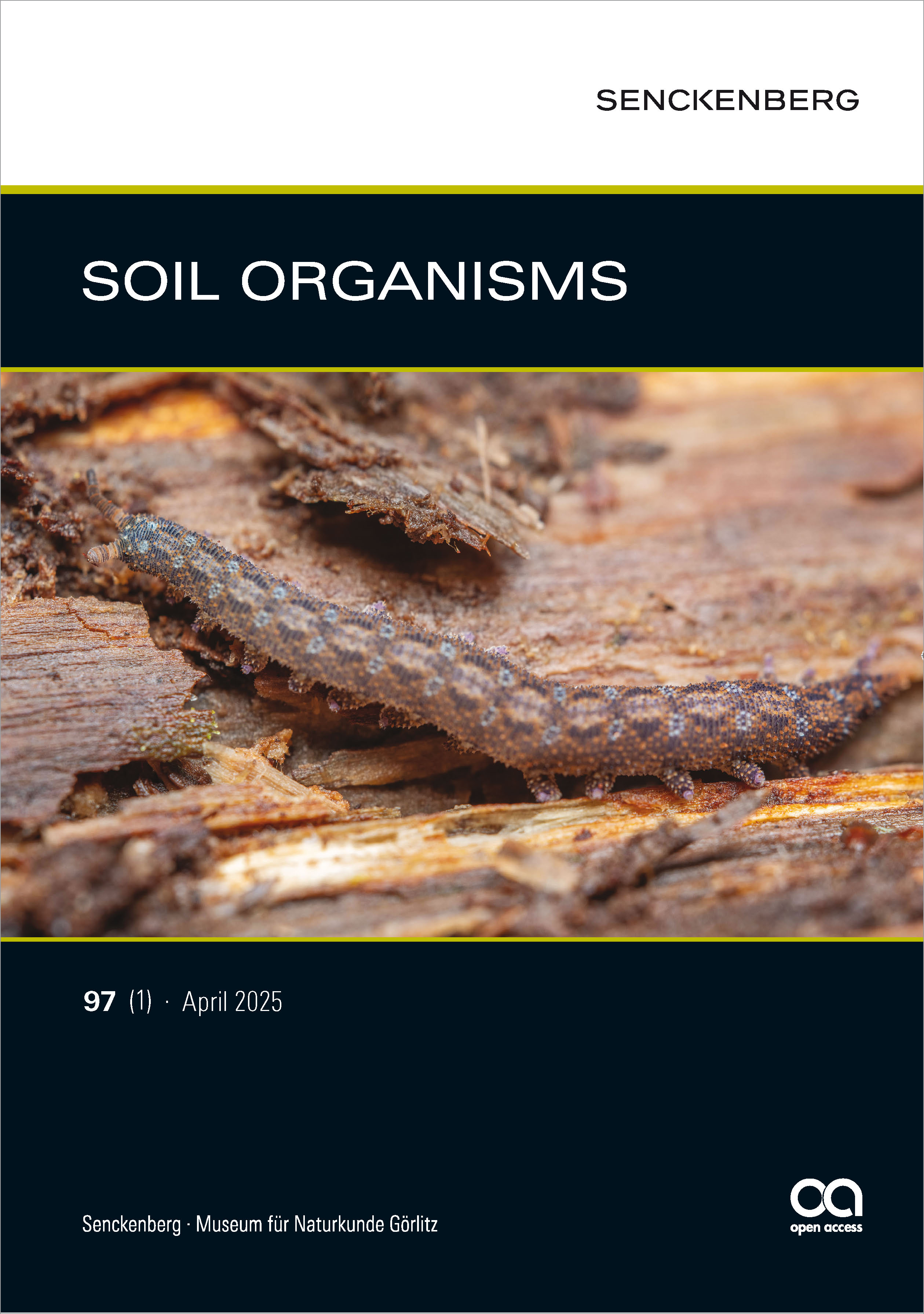A method for capturing images of Collembola bioluminescence using a smartphone camera
DOI:
https://doi.org/10.25674/430Keywords:
Enclosure, photographic evidence, still photograph, videoAbstract
Although bioluminescence in Collembola has been known since 1851, photographic evidence remains sparse. Photographs serve as essential evidence to confirm bioluminescence and facilitate further investigations into this phenomenon. We present a method for capturing images of Collembola bioluminescence using a smartphone camera, which will facilitate the discovery and description of luminous Collembola taxa worldwide.
Downloads
References
Allman (1851): On the emission of light by Anurophonus fimentareous. Proceedings of the Royal Irish Academy, 5:125–126.
Bellinger, P.F., Christiansen, K.A. & Janssens, F. (1996–2024): Checklist of the Collembola of the World. http://www.collembola.org/.
Kashiwabara, S. (1997): An origin of firefly luminescence? Luminescence of Collembola. SClaS, 2: 10 [in Japanese].
Kataoka, M. & Nakamori, T. (2020): Food preferences of Collembola for myxomycete plasmodia and plasmodium responses in the presence of Collembola. Fungal Ecology, 47: 100965. https://doi.org/10.1016/j.funeco.2020.100965.
Kim, H., Jung, Y., Doh, I.-J., Lozano-Mahecha, R.A., Applegate, B. & Bae, E. (2017): Smartphone-based low light detection for bioluminescence application. Scientific Reports, 7: 40203. https://doi.org/10.1038/srep40203.
Molisch, H. (1904): Leuchtende Pflanzen. Eine physiologische Studie. Gustav Fisher Verlag, Jena: 168 pp.
Oba, Y., Branham, M.A. & Fukatsu, T. (2011): The terrestrial bioluminescent animals of Japan. Zoological Science, 28: 771–789 [https://doi.org/10.2108/zsj.28.771].
Ohira, A., Nakamori, T., Matsumoto, S., Bessho-Uehara, M., Kato, T. & Oba, Y. (2023): Contribution to the taxonomy of Lobellini (Collembola: Neanurinae) and investigations on luminous Collembola from Japan. Zootaxa, 5325: 63–89. https://doi.org/10.11646/zootaxa.5325.1.4.
Park, S.A., Jeong, H.J., Ok, J.H., Kang, H.C., You, J.H., Eom, S.H., Yoo, Y.D., Lee, M.J. (2021): Bioluminescence capability and intensity in the dinoflagellate Alexandrium species. Algae, 36: 299-314. https://doi.org/10.4490/algae.2021.36.12.6.
Potapov, A., Bellini, B.C., Chown, S., Deharveng, L., Janssens, F., Kováč, Ľ., Kuznetsova, N., Ponge, J.-F., Potapov, M., Querner, P., Russell, D., Sun, X., Zhang, F. & Berg, M. (2020): Towards a global synthesis of Collembola knowledge – challenges and potential solutions. Soil Organisms, 92: 161–188. https://doi.org/10.25674/so92iss3pp161.
Ramesh, C. & Meyer-Rochow, V.B. (2021): Bioluminescence in aquatic and terrestrial organisms elicited through various kinds of stimulation. Aquatic Ecology, 55: 737–764. https://doi.org/10.1007/s10452-021-09875-0.
Sano, T., Kobayashi, Y., Sakai, I., Ogoh, K. & Suzuki, H. (2019): Ecological and histological notes on the luminous springtail, Lobella sp. (Collembola: Neanuridae), discovered in Tokyo, Japan. In: Suzuki, H. (ed.): Bioluminescence: Analytical Applications and Basic Biology. Intech Open, London. https://doi.org/10.5772/intechopen.88321.
Schaefer, M.A., Nelson, H.N., Butrum, J.L., Gronseth, J.R. & Hines, J.H. (2023): A low-cost smartphone fluorescence microscope for research, life science education, and STEM outreach. Scientific Reports, 13: 2722. https://doi.org/10.1038/s41598-023-29182-y.
Terashima, Y., Neda, H., Hiroi, M. (2017): Luminescent intensity of cultured mycelia of eight basidiomycetous fungi from Japan. Mushroom Science and Biotechnology, 24: 176-181.
Downloads
Published
Issue
Section
License
Copyright (c) 2025 Atsuko Ohira, Taizo Nakamori

This work is licensed under a Creative Commons Attribution 4.0 International License.
Soil Organisms is committed to fair open access publishing. All articles are available online without publication fees. Articles published from Vol. 96 No. 3 (2024) onwards are licensed under the Creative Commons Attribution 4.0 International (CC BY 4.0) license. Articles published from Vol. 80 No. 1 through Vol. 96 No. 2 are available under the previous terms, allowing non-commercial, private, and scientific use.

